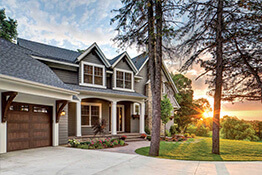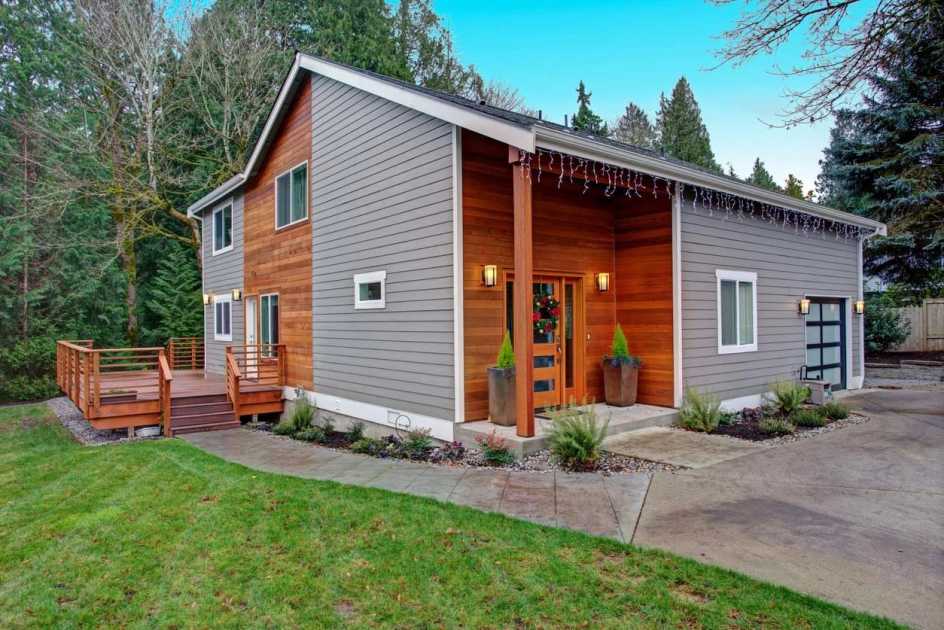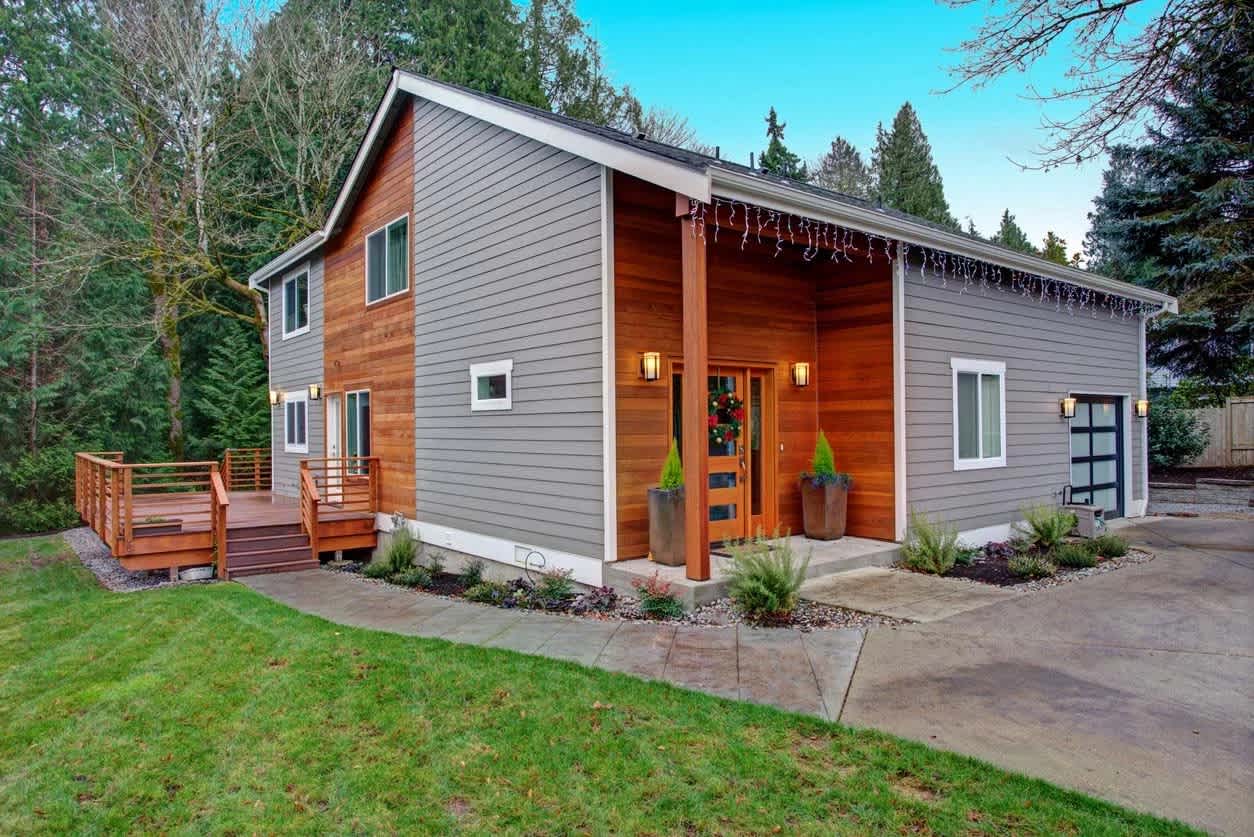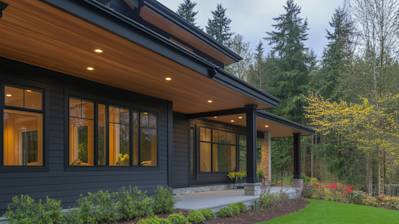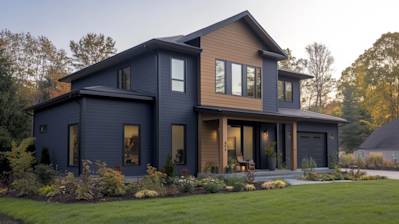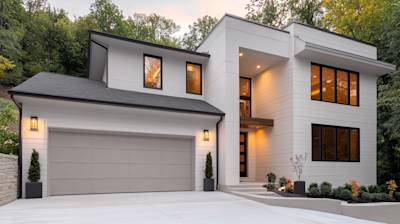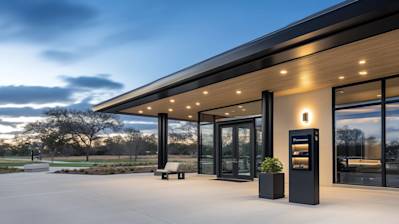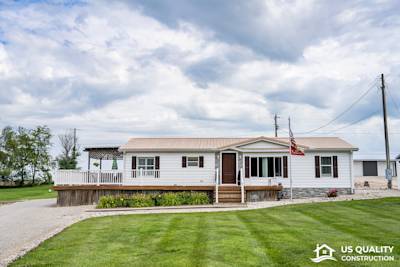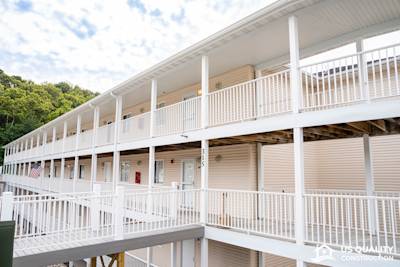Home exteriors play a monumental role in defining the aesthetic appeal and longevity of your property. Among the sundry options available, siding stands as a forerunner in the race to equip homes with a durable and attractive skin. However, there may come a time when it becomes crucial to replace the siding. With numerous factors affecting the cost, it begs the question, "What is the average cost to replace siding?" In this comprehensive guide, we present you with detailed insights on this topic and some practical tips to help in your quest for siding replacement.
Average Cost to Replace Siding
The typical expense for replacing siding varies, as per insights gathered from reputable sources in the renovation and home improvement domain. This estimation typically applies to residences of standard size and considers the utilization of vinyl siding materials, favored for their affordability and resilience. However, you might wonder about the impact on overall costs if you choose alternative siding materials. Let's explore that aspect further.
Impact of Siding Materials on the Cost to Replace Siding
Siding materials play an integral role in determining the average cost to replace siding. While vinyl siding stands as the go-to choice for many homeowners, alternatives such as wood, stucco, brick, and metal sidings have their own set of benefits. Here's a breakdown of these materials:
- Vinyl Siding: Highly affordable and relatively easy to install. Average cost ranges from $4 to $7 per square foot, including installation.
- Wood Siding: Offers a timeless appeal, but requires continuous maintenance against issues like warping and rotting. The average cost ranges between $7 and $12 per square foot.
- Metal Siding: Known for long-lasting durability. Prices can vary from $5 to $8 per square foot.
- Stucco Siding: It is quite durable, and prices range from $6 to $9 per square foot.
- Brick Siding: Known for extreme resistance to environmental elements, making it long-lasting. However, it's pricier – between $10 and $22 per square foot.
Additional Factors Affecting the Cost to Replace Siding
While the type of siding material significantly impacts the average cost to replace siding, it's not the only determinant. Other crucial factors come into play:
- Surface Area of Your Home: Larger homes will require more materials and more labor, thus increasing the costs.
- Labor Costs: Depending on the difficulty of the project and the contractor's hourly rate, labor costs can substantially impact the total cost.
- Removal of Old Siding: If the old siding needs to be removed, this could add to the labor and disposal costs.
- Geographical Location: Prices for both materials and labor vary depending on the region.
- Additional Features: Extra features like insulation or custom trim can further inflate the costs.
Handy Tips for Siding Replacement
Now that you are equipped with knowledge about the primary factors affecting the cost to replace siding, let's share some practical tips:
- Research and Compare: Always compare prices from different siding contractors to ensure you're getting the best deal.
- Consider the Long-term: It's not just the upfront cost that matters. Consider the durability and the maintenance requirements of the siding material to understand its potential long-term costs.
- Time your Replacement: Choosing the off-peak seasons could help you negotiate better prices with your contractor.
- Keep Maintenance in Mind: If easy and affordable maintenance is important to you, consider siding options such as vinyl that require less upkeep.
Deciphering the average cost to replace siding involves more than just crunching numbers. With careful consideration of your specific needs and budget, along with the information shared in this guide, you can build a robust, cost-effective strategy to revamp your home's exterior. Remember, an attractive and durable siding not only adds curb appeal but significantly enhances the value of your residence.
How does the type of siding impact the replacement cost?
The type of siding you choose has a significant impact on the cost. Vinyl siding is relatively inexpensive and easy to install, ranging from $3 to $7 per square foot. Wood siding is typically more expensive, costing between $7 and $12 per square foot. More luxurious options, like stone or stucco, can be as much as $20 to $50 per square foot.
What labor costs are associated with replacing siding?
Labor costs can vary depending on the complexity of the job, the region, and the contractor's experience. On average, expect to pay around $1 to $3 per square foot for labor, but it could be higher for tasks that require more specialized skills or for homes with multiple stories or complex architectural features.
How much does it cost to replace siding per square foot?
On average, the cost for siding materials runs between $3 and $11 per square foot, depending on the type. When factoring in labor and other costs, the total cost to replace siding can range from $5 to $15 per square foot. Again, this is an average approximation, and specific costs can vary.
Why is there so much variation in the cost to replace siding?
Many factors contribute to the cost variability when replacing siding. The type and quality of materials, labor charges, house size, and geographical location all play a part in how much you’ll pay. Additional factors that add to the cost include whether your house has multiple stories, is older or has architectural features that make the job complex.
Should I anticipate extra costs when replacing siding?
In the process of replacing siding, you may encounter some unexpected costs. Issues like rot or damage to the home's structural elements that's uncovered when removing the old siding may need repairing before the new siding can be installed. This could significantly increase the cost.
Could DIY save me money on the cost to replace siding?
Yes, doing it yourself can save money, but it's not suitable for everyone. Sidings require careful installation to ensure they provide the necessary protection to your home. Any mistakes during installation could lead to serious issues, requiring professional assistance down the line. If you have experience with home improvements of this scope, then DIY might be an option. If not, hiring a professional ensures the job is done right from the start.
Is it better to repair or replace my siding?
Your decision should depend on the condition of your current siding. If only a small section is damaged, it could be more cost-effective to repair. If your siding is old, showing signs of rot or wear across the whole facade, replacement might be the best option.
How can I get an estimate on the cost to replace my siding?
You can get an estimate by contacting professional siding contractors in your area. They will be able to provide you with an on-site estimate considering your house's size, the state of your old siding, and the type of siding you want to install. Some contractors offer a free estimate, so it's worth shopping around to get the most accurate cost prediction.
How often will I need to replace my siding?
The lifespan of siding depends largely on the material. Vinyl siding can last 20-40 years, while wood siding might require replacement after 10-20 years. Fiber cement siding can last upwards of 25-50 years. Factors such as climate, maintenance, and installation quality can affect these timelines.
Summary
When all is said and done, the cost to replace siding can largely depend on numerous factors. The type of siding, the size of the house, the cost of labor in your area, and whether or not old siding will need to be removed and disposed of, all play a role in the final cost. Despite the variation, one cannot deny the value it adds to a house. Not to mention, new siding can also save you money on energy costs in the long run.
Ultimately, it's essential to remember that the cost to replace siding is also an investment into your home's value. Home improvements, such as replacing siding, enhance curb appeal and undoubtedly increase your property's market value. So, while the initial cost may seem high, the long-term benefits, including increased home equity and boosted curb appeal, are indeed a noteworthy return on investment.
Whether you're selling your house or planning to stay for many years, updating or replacing your siding is one of the most significant investments to consider seriously. While the cost to replace siding can be high for some homeowners, the benefits are undeniable. Improved appearance, enhanced energy efficiency, increase in property value, and protection against harsh elements are just a few reasons to consider having your siding replaced. Remember, the best way to ensure a cost-effective siding installation is to do thorough research and choose reliable, experienced contractors for the job.
About US Quality Construction
Welcome to US Quality Construction! We are proud to be Kansas City, MO's premier construction company, boasting a rich heritage spanning several years. Known for our dedication to quality, we've crafted a reputation for superior workmanship and outstanding customer service. Whether your project is big or small, residential or commercial, our seasoned team combines cutting-edge construction techniques with good-old fashioned integrity to ensure your project is completed on time, within budget, and beyond expectation. We're not just building structures, we're crafting legacy. Choose US Quality Construction and experience the difference.
Tags: Siding Replacement Cost, Siding Replacement Guide, Siding Replacement Tips,
